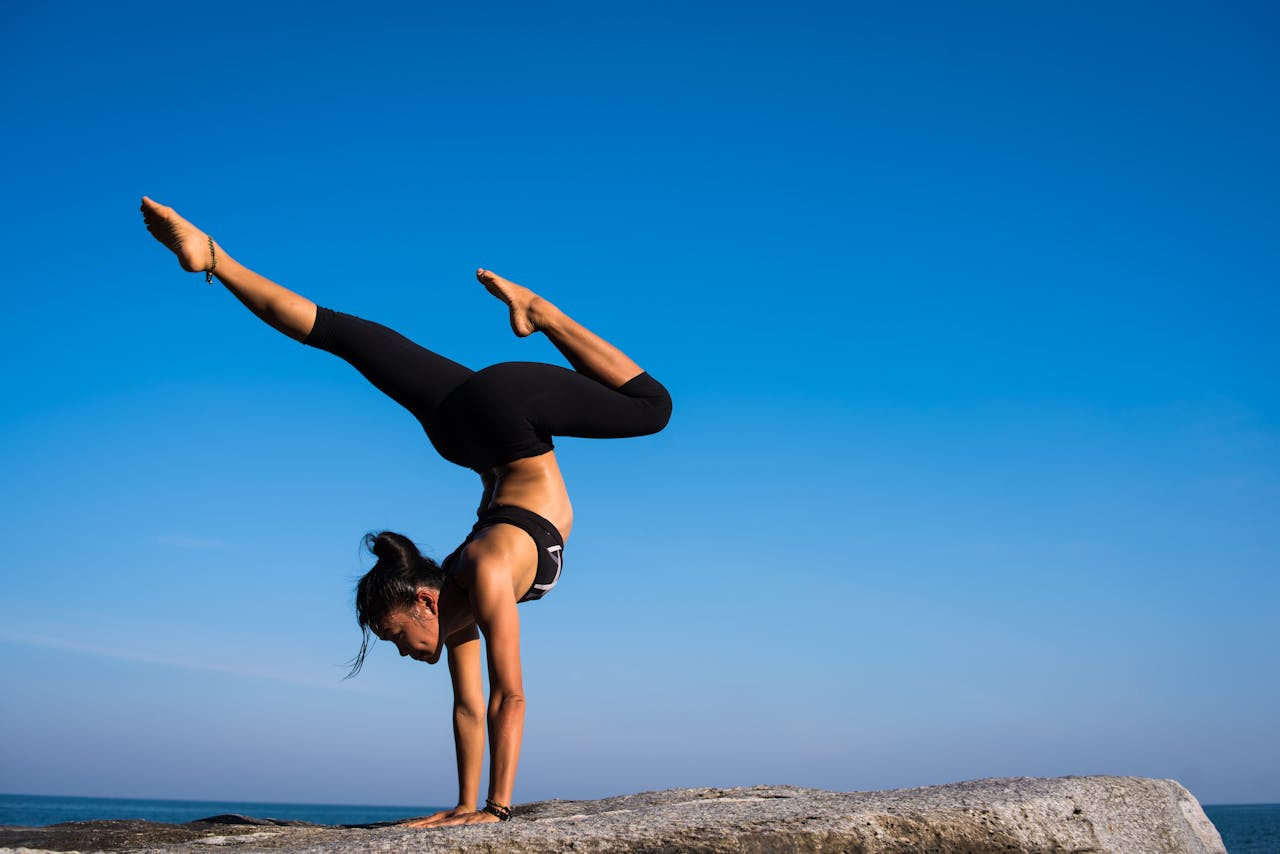-
Table of Contents
. Find your calm. Find your strength. Find your yoga.
Introduction
Yoga, an ancient practice originating in India, offers a holistic approach to well-being that extends far beyond physical fitness. Its emphasis on mindful movement, controlled breathing, and meditation techniques has been proven effective in reducing stress and promoting relaxation.
Creating a Relaxing Yoga Practice for Daily Stress Management
In today’s fast-paced world, stress has become an unwelcome companion for many. The constant demands of work, relationships, and daily life can leave us feeling overwhelmed and depleted. Fortunately, there’s a powerful tool at our disposal that can help us navigate these turbulent waters: yoga. More than just physical postures, yoga offers a holistic approach to stress management, encompassing breathwork, mindfulness, and meditation. By incorporating a regular yoga practice into our routines, we can cultivate a sense of calm, clarity, and resilience in the face of life’s inevitable challenges.
Creating a relaxing yoga practice for daily stress management begins with understanding your needs and limitations. Start by setting aside a quiet space in your home where you can practice undisturbed. Choose a time of day that works best for you, whether it’s first thing in the morning to set a peaceful tone or in the evening to unwind before bed. Begin with shorter sessions, perhaps 15-20 minutes, and gradually increase the duration as you feel comfortable. Remember, consistency is key. Even a few minutes of dedicated practice each day can make a significant difference.
One of the most effective aspects of yoga for stress relief is its emphasis on breathwork. Deep, conscious breathing can help regulate our nervous system, calming the mind and body. Try practicing diaphragmatic breathing, also known as belly breathing, by inhaling deeply into your abdomen, allowing your belly to expand, and exhaling slowly, feeling your belly contract. As you focus on your breath, notice the sensations in your body and the thoughts that arise. Don’t judge them, simply observe them with gentle curiosity.
Incorporating gentle stretches and poses into your practice can also help release tension and promote relaxation. Cat-cow pose, for example, is a simple yet effective way to mobilize the spine and relieve stress in the back and shoulders. Child’s pose is a deeply calming pose that can help soothe the nervous system and ease anxiety. Downward-facing dog stretches the entire back body, releasing tension in the hamstrings, calves, and shoulders. Hold each pose for several breaths, allowing your body to fully relax into it.
As you progress in your practice, you may want to explore more restorative poses, such as legs-up-the-wall pose or supported savasana. These poses encourage deep relaxation and can be particularly helpful for managing stress and insomnia. Use props like blankets, pillows, and bolsters to support your body and enhance your comfort.
Finally, remember that yoga is a journey, not a destination. Be patient with yourself, listen to your body, and adjust your practice as needed. Don’t be afraid to experiment with different poses, breathing techniques, and sequences to find what works best for you. With consistent practice, you’ll discover the profound benefits of yoga for stress relief and cultivate a sense of inner peace that will radiate outward into all areas of your life.
Q&A
**Question 1:** What type of yoga is best for stress relief?
**Answer:** Hatha, Yin, and Restorative yoga are known for their calming and stress-reducing benefits.
**Question 2:** How does yoga help relieve stress?
**Answer:** Yoga combines physical postures, breathing exercises, and meditation, which can lower cortisol levels, reduce muscle tension, and promote relaxation.
**Question 3:** How often should I practice yoga for stress relief?
**Answer:** Aim for at least 30 minutes of yoga practice 3-4 times a week for noticeable stress reduction.
Conclusion
Yoga offers a holistic approach to stress relief, combining physical postures, controlled breathing, and mindfulness practices to promote relaxation, reduce anxiety, and improve overall well-being. Its effectiveness stems from its ability to regulate the nervous system, release tension in the body, and cultivate a sense of inner peace. Regular yoga practice can empower individuals to manage stress more effectively, leading to a calmer, more balanced life.



